



9. AGILENT 5500 SERIES ATOMIC FORCE MICROSCOPY (AFM)/SCANNING
PROBE MICROSCOPY (SPM)
PATLAB is equipped with an Agilent 5500 ideal multiple-
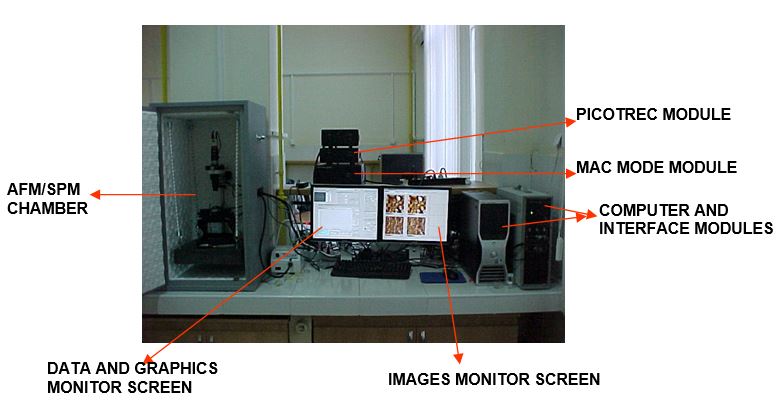
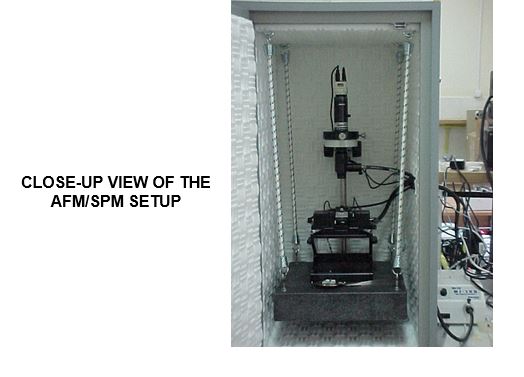
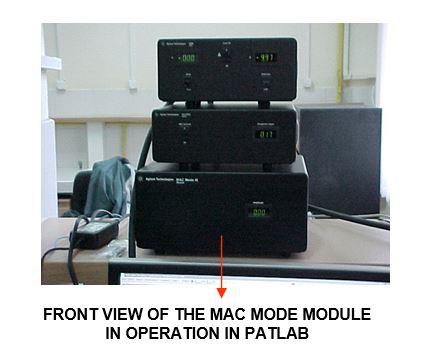
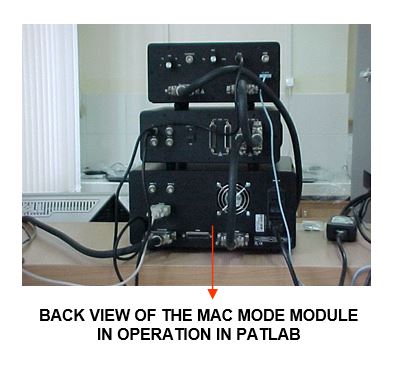
MAC (magnetic AC) Mode AFM
In atomic force microscopy (AFM), a sharp tip is scanned over a sample while maintaining a constant interatomic force between atoms on the end of the tip and atoms on the surface of interest. Early implementation of AFM employed the contact mode of operation in which the repulsive force experienced by the tip was measured by recording the cantilever deflection. Under ambient conditions, these repulsive forces range from a few to hundreds of nanonewtons. The forces between the AFM tip and the sample cause pressures large enough to induce distortion, remove portions of the sample from the substrate, and even damage the tip. By scanning in a liquid, capillary forces are reduced, which decreases the forces between the tip and sample by orders of magnitude. Other forces such as contact pressures, however, can still lead to dulling of the AFM tip and deformation of soft biological samples.
An effective method to reduce destructive lateral forces and to enhance sensitivity and reproducibility involves dynamic oscillation of the AFM tip while imaging. MAC mode AFM was developed [1] to reduce damage-
[1] Han et al, APL 69 (1996), 4111 -
[2] Hansma et al, APL 64 (1994), 1738 -
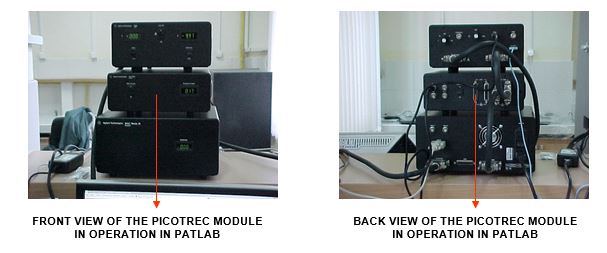
TREC (Topography and Recognition Imaging)
PicoTREC is a relatively new technique which offers fast binding site mapping as well as topographic imaging across a surface with nanometer resolution. It has been successfully applied to several model receptor-
[3] Stroh et al, PNAS 101 (2004), 12503 -
[4] Kada et al, Nanotoday 3 (2008), 12 -
10. RESEARCH UV-
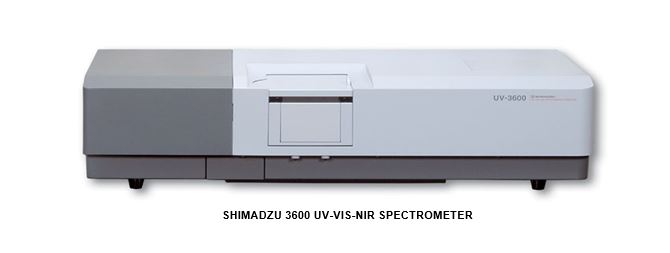
PATLAB has a Shimadzu 3600 UV-
Ultra-
Technical Characteristics:-
Wavelength range 185nm -
Spectral Bandwidth 8 steps in ultraviolet/visible region 0.1, 0.2, 0.5, 1, 2, 3, 5, 8 nm
10 steps in near-
Resolution 0.1 nm
Sampling Pitch 0.01 -
Wavelength accuracy UV/VIS region: ± 0.2 nm NIR region: ±0. 8 nm
Wavelength repeatability UV/VIS region: less than ±0.08 nm NIR region: less than ±0.32 nm
Stray light < 0.00008% (220 nm, NaI)
< 0.00005% (340 nm, NaNO2)
< 0.0005% (1420 nm, H2O)
< 0.005% (2365 nm, CHCl3)
Photometric range -
Noise 0.00005 Abs or less (500 nm), 0.00008 Abs or less (900 nm), 0.00003 Abs or less (1500 nm)
Slit width 2nm, RMS value at 1 sec. response
Photometric System Double beam
11. CYBERSCAN PCD 6500 pH/ION/CONDUCTIVITY/DO MULTIMETER.
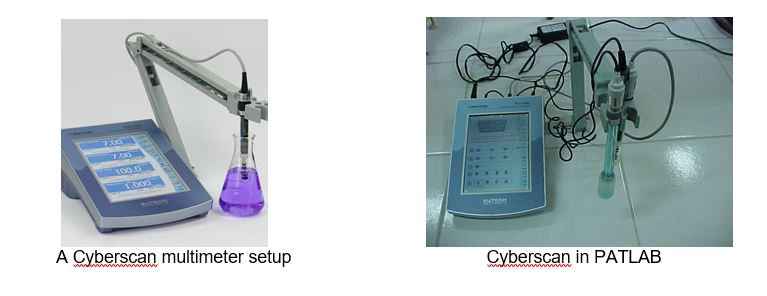
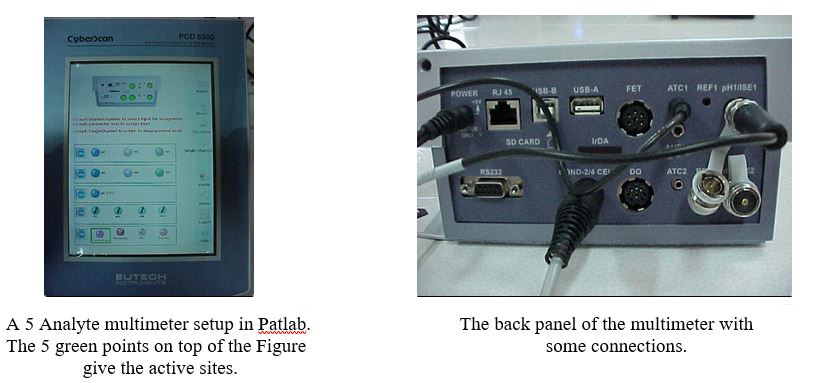
The Cyberscan PCD 6500 pH/Ion/Conductivity/Dissolved Oxygen (DO) multimeter in PATLAB measures and views up to four parameters at the same time with no cross-
Technical Characteristics:-
Product Specification Description
pH Range -
Resolution & Accuracy 0.1/0.01/0.001 pH & ±0.002 pH
mV Range -
Resolution & Accuracy 0.1 mV & ±0.1 mV
Ion Concentration Range 1 x 10-
Resolution & Accuracy 4 sig. figures & ±0.17n%
DO Range 0 to 60 ppm, 0 to 600%
Resolution & Accuracy 0.01/0.10% & 0.1% + 1 LSD
Conductivity Range 0 to 500 mS/cm
Resistivity Range 3 ohm cm to 100 megohm cm
Salinity Range 0 to 90 ppt
Accuracy 0.5% full scale + 1 LSD
Cell Constant 0.1, 1.0, 10.0
Temperature Range -
Resolution & Accuracy 0.1 °C & ±0.2 °C
No. of pH Calibration Points Up to 5
pH Buffer Options USA: 2, 4, 7, 10, 12
NIST: 1.68, 4.01. 6.86, 9.18, 12.45
Euro: 1, 3, 6, 8, 10, 12
No. of Ion Calibration Points 5
Incremental methods KA, KS, AA, AS
Temperature Compensation Automatic / Manual (0 to 100 °C)
DO Testing 5-
Automatic Barometric Pressure Compensation 450 to 825 mmHg
Memory 10,000 Data Sets with Date/Time stamping
Programmable data storage/output On stable, time and manual
Output USB, IRDA, RS232C
Print Interval 3 to 86400 sec
Electrode Input FET (solid-
Display 640x480 digit LCD
Power 9VDC, 3.3A center negative
12. METROHM AUTOLAB POTENTIOSTAT INSTRUMENTS
PATLAB has 5 METROHM Autolab Potentiostat electrochemical instruments. Of these instruments 3 different modules from the older generation are available to expand the possibilities of the Autolab main units: PGSTAT12, PGSTAT30 and PGSTAT100. These Autolab computer controlled electrochemical instruments can be controlled from two different software packages: GPES for electrochemical techniques and FRA for impedance spectroscopy (in combination with a FRA2 module). The combination of the Autolab hard-
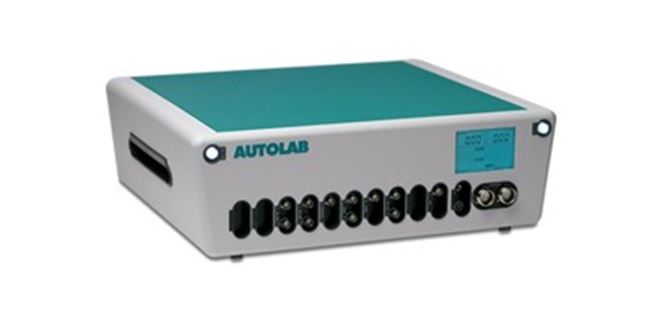
METROHM AUTOLAB GENERAL MODEL UNIT
The METROHM Autolab/PGSTAT12 is a modular low-
research.
The METROHM Autolab/PGSTAT30 is a modular high current potentiostat/galvanostat with a maximum current of 1 A, a compliance voltage of 30 V and the possibility to do iR-
The METROHM Autolab/PGSTAT100 is a modular high voltage potentiostat/galvanostat capable of measuring or applying a maximum current of 250 mA, a compliance voltage of 100 V and the possibility to do iR-
The following picture shows Autolab/PGSTAT100 research high voltage potentiostat/galvanostat in operation in PATLAB.
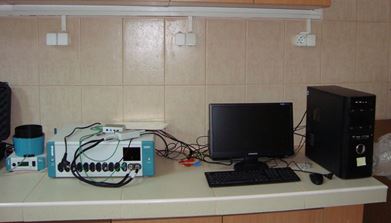
Autolab/PGSTAT100 in PATLAB
The entry level member of the modular Autolab instruments family, the PGSTAT128N is a low current, low noise and fast potentiostat/galvanostat capable of measuring maximum 800 mA, with a compliance voltage of 12 V. The PGSTAT128N is a high performance low cost option for electrochemical measurements in small cells.
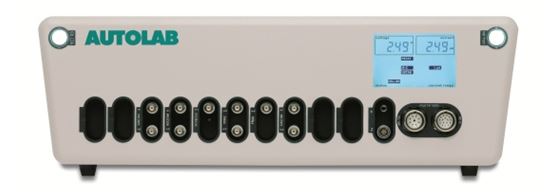
Autolab PGSTAT128N
Designed for a wide range of electrochemical applications, from corrosion measurements to the characterization of energy storage devices, this budget instrument is the ideal choice for electrochemical applications where performance is important. One can customize and enhance the capabilities of the PGSTAT128N by adding one or more of the many available optional modules or accessories.
Key features Compatible modules
Electrode connections 2, 3 and 4 EQCM
Potential range +/-
Compliance voltage +/-
Maximum current +/-
Current ranges 1 A to 10 nA (100 pA with ECD module) ECD
Potential accuracy +/-
Potential resolution 0.3 µV ADC10M
Current accuracy +/-
Current resolution 0.0003 % (of current range) FI20
Input impedance > 1 Tohm pX1000
Potentiostat bandwidth 500 kHz ECN
Computer interface USB
Control software NOVA
13. AUTOLAB ESPRIT SURFACE PLASMA RESONANCE INSTRUMENT.
The Autolab Surface Plasma Resonance (SPR) instrumentation helps the scientist to analyze bi-
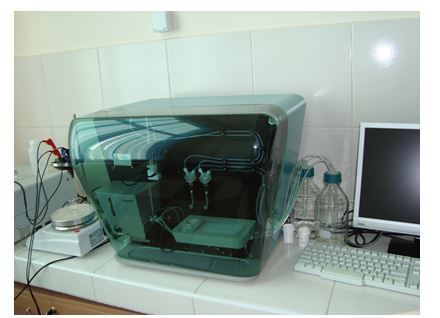
Autolab Surface Plasma Resonance (SPR)
The Autolab ESPRIT allows the user to perform high-
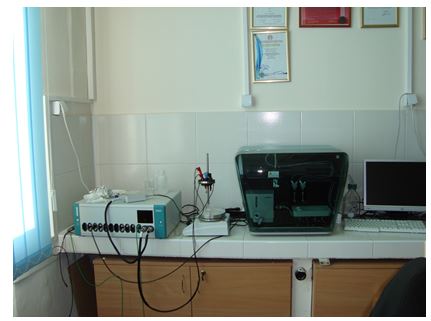
ESPRIT (SPR) coupled to Potentiostat/Galvanostat
14. SECM370 SCANNING ELECTROCHEMICAL MICROSCOPE SYSTEM.
The SECM370 is a precision scanning micro-
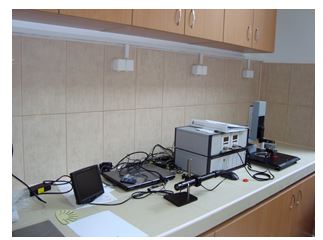
SECM370 SYSTEM
It can be used to examine, analyse or alter the surface chemistry of a sample in solution. This equipment has many potential applications in the study of fundamentals of surface reactions for example in flow through membranes, chemical imaging of biosystems, corrosion science, or the study of enzyme stabilization. The SECM370 system includes a precision dual potentiostat system, allowing full control and measurement of electrochemical processes at the micro-
15. COMPACTSTAT.h: Portable Electrochemical Interface & Impedance Analyser
The IVIUM COMPACTSTAT.h is a Portable Electrochemical Interface & Impedance Analyser that can be operated via the USB port from a PC, without additional power supply.
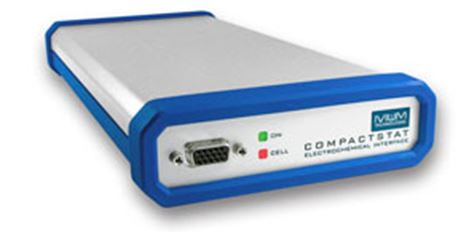
IVIUM COMPACTSTAT
In combination with a laptop-
• Low noise and galvanic isolation:
The instrument is electrically isolated from power lines and PC. It has superior noise immunity, and is capable of determining very small signals, such as required in nano-
• Complete solution:
The CompactStat offers a complete package; all the standard Electrochemical techniques are included. The CompactStat also has an integrated high-
• Automation:
Multiple analog and digital input & output ports are available for monitoring & control of peripheral equipment. This functionality is fully integrated in the software.
• Expandability:
The CompactStat can be expanded with a wide variety of options and modules, including a Bipotentiostat, True Linear Scan generator, various power boosters, multiplexer and FastScan.
• Hardware:
-
-
-
-
-
-
-
16. QEPRO-
The QEPRO-
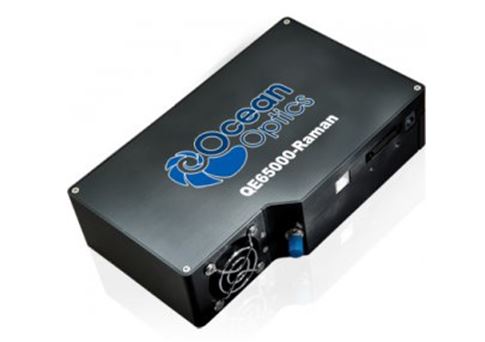
QEPRO-
New! Optical Bench Enhancements
The great performance of our QEPRO-
We are also offering a proprietary low BRDF bench coating to improve stray light performance and provide better reproducibility in unit-
Quantum Efficiency to 90%
The QEPRO is the most sensitive spectrometer we have ever developed. The Hamamatsu FFT-
Increased System Sensitivity
In our spectrometers with linear CCDs, the slit’s width, not its height, regulates the amount of light entering the bench because linear CCDs cannot efficiently collect the light from the entire height of the slit. But in the QE65000, the 2D area detector can better take advantage of the height of the slit and the additional light, greatly improving system sensitivity.
Excellent UV Response
Because the detector in the QEPRORaman is back-
Demanding Low Light-
The QE65000-
Onboard Programming
The QE65000-
Plug-
The QE65000-
QE65000-
The QE65000-
Specifications
Physical
Dimensions: 182 mm x 110 mm x 47 mm
Weight: 1.18 kg (without power supply)
Detector
Detector: Hamamatsu S7031-
Detector range: 200-
Pixels: 1024 x 58 (1044 x 64 total pixels)
Pixel size: 24.576 μm2
Pixel well depth: 1000 Ke-
Sensitivity: ~0.065 counts / e-
Quantum efficiency: 90% peak; 65% at 250 nm
Optical Bench
Design: f/4, Symmetrical crossed Czerny-
Focal length: 101.6 mm input and output
Entrance aperture: 50 µm wide slit
HC6 grating: provides 123-
Detector collection lens option: None
Collimating and focusing mirrors: Standard only
UV enhanced window: No
Fiber optic connector: SMA 905 to 0.22 numerical aperture single-
Spectroscopic
Wavelength range: 780 -
Optical resolution: ~0.14-
Signal-
A/D resolution: 16 bit
Dark noise: 3 RMS counts
Dynamic range: 7.5 x 109 (system), 25000:1 for a single acquisition
Integration time: 8 ms to 15 minutes
Stray light: <0.08% at 600 nm; 0.4% at 435 nm
Corrected linearity: >99.8%
Electronics
Power consumption: 500 mA @ 5 VDC (no TE cooling); 3.5 A @ 5 VDC (with TE cooling)
Data transfer speed: Full scans to memory every 7 ms with USB 2.0 port, 18 ms with USB1.1 port, 300 ms with serial port
Inputs/Outputs: 10 onboard digital user-
Analog channels: No
Auto nulling: Yes
Breakout box compatibility: Yes: HR4-
Trigger modes: 4 modes
Strobe functions: No
Gated delay feature: Yes
Connector: 30-
Power-
Dark current: 4000 e-
Computer
Operating systems: Windows 98/Me/2000/XP/Win7, Mac OS X and Linux with USB port;
Any 32-
Computer interfaces: USB 2.0 @ 480 Mbps; RS-
Peripheral interfaces: SPI (3-
Temperature and Thermoelectric (TE) Cooling
Temperature limits: 0 ºC to 50.0 ºC; no condensation
Set point: Software controlled; lowest set point is 40 ºC below ambient
Stability +/-
17. PORTABLE PINPOINTER RAMAN INSTRUMENT
PATLAB is equipped with a PinPointer instrument that packs a full-
The following figures give viewpoints of the PinPointer instrument:-
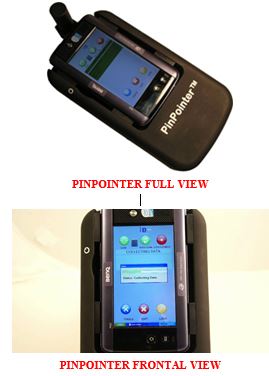
The PinPointer portable instrument has the following benefits:-
Easy and Fast Substance Identification. Many substances emit a characteristic light when illuminated with a laser, the Raman scatter effect, which uniquely identifies a molecular structure. With a touch of a button, the PinPointer collects and analyzes this scattered light from a chemical under test. The included ID-
Affordable, Compact, High Performance. The PinPointer provides the same performance as other handheld Raman spectrometers proposed for homeland security or on-
Wide Chemical Coverage. The included ID-
Substance ID of Packaged Materials. Solid, powder or liquid samples can be analyzed while still contained in plastic bags or glass or plastic bottles or vials.
The PinPointer has the following specifications:-
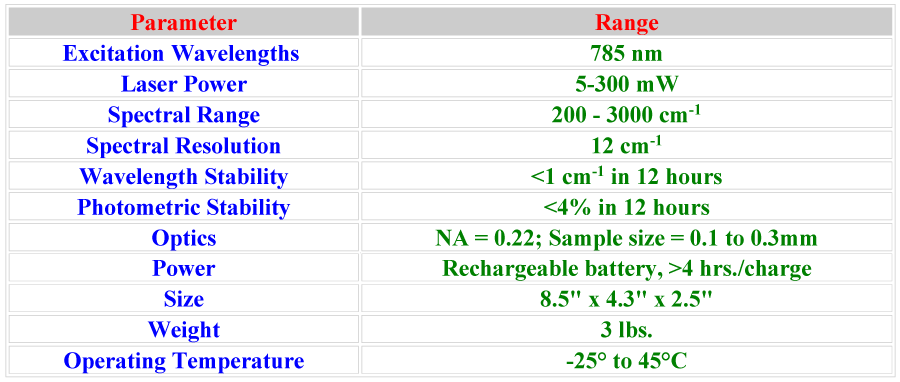
18. SUPER-
PATLAB has a SUPER-
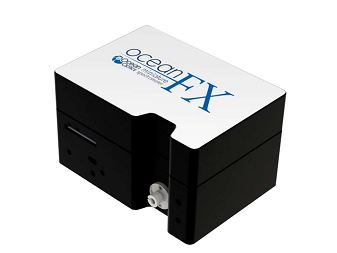
Ocean FX Spectrometer
ADVANTAGES OF OCEAN FX
• Acquisition speed of up to 4,500 spectra collected per second
• CMOS detector (200-
• Onboard averaging of up to 5,000 spectra
• Onboard buffering (up to 50,000 spectra stored)
• Wired Gigabit Ethernet, Wi-
• Thermally stable optical bench and indicator LED for convenience
Ocean FX is available in application-
OCEAN FX SPECIFICATIONS
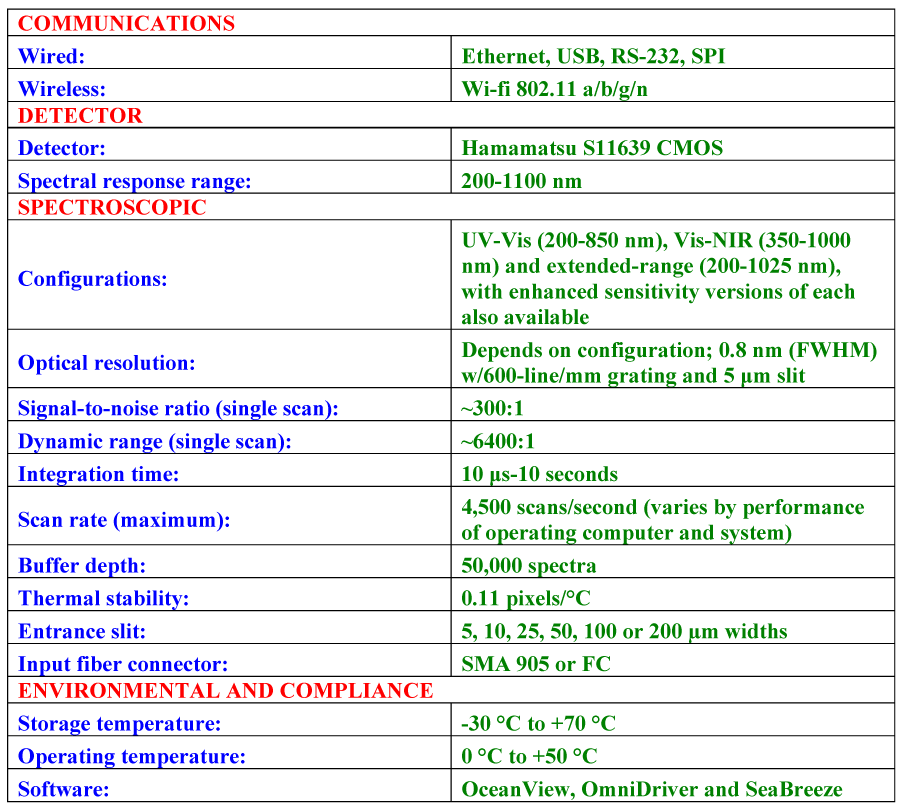
The PATLAB SUPER-
Absorbance
Fluorescence
Near Infrared
Raman
Reflectance & Transmittance.
